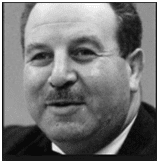
In the 1950’s, Robert Kark and his team of Robert C. Muehrcke, Victor Pollak, and Conrad Pirani became, for a short time, the dominant force in American nephrology by popularizing the use of kidney biopsy as a diagnostic tool. This technique had first been described by Scandinavian investigators with somewhat limited success, but the Kark team modified it to make it easier to use and applied it to various forms of renal diseases, notably glomerulonephritis, lupus erythematosus, nephritis, preeclampsia, and diabetic nephropathy. Many of these descriptions were significant advances at that time. Their description of diabetic nephropathy, with its diffuse and a nodular form, has not been bettered since. They correctly “dismembered” membranous glomerulonephritis, showing that it was not the end stage of minimal change nephrotic syndrome, so called lipoid nephrosis, but that the two were distinct entities. They also published the first classification of lupus nephritis and were the first to slow down the progression of the severe form of the disease and prolonged life by pioneering the use of high doses of steroids. In their Chicago unit, they trained many young investigators, several from England and the Continent who at that time regarded the unit of Robert Kark as the Mecca of nephrology.
Robert Manoah Kark was born in Cape Town, South Africa, and in his youth was an accomplished rugby union player. He studied medicine at Guy’s Hospital in London, and served in the British Army forces in Southeast Asia during World War II, writing a series of papers on nutrition. After the war he carried out research at the Thorndike Memorial Laboratory, Boston City Hospital, and Harvard Medical School. He became known as an authority in liver disease and various metabolic disorders and went to the University of Illinois in Chicago in 1948. He had already written some hundred papers on a variety of clinical problems before he became interested in diseases of the kidney and in conjunction with his associates, pioneered the use of renal biopsy and made important contributions to the understanding of light and electron microscopy in various forms of kidney disease. The papers he wrote in association with his colleagues were beautifully documented and have remained classics in nephrology and examples of how clinical reports should be written. Dr. Kark’s activities ranged over a wide field. He was a professor of medicine at the University of Illinois and Rush Medical College, a visiting professor at many medical schools, consulting editor to several prestigious medical journals, governor and regent of the American College of Physicians, member of many scientific boards, and recipient of many awards. His interests were wide and after retiring, he was engaged in writing a biography of Richard Bright and traveled to many remote areas to assemble information about him and to interview some of his descendants.
GEORGE DUNEA, MD, Editor-in-Chief

Leave a Reply